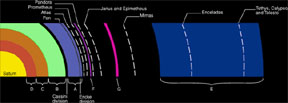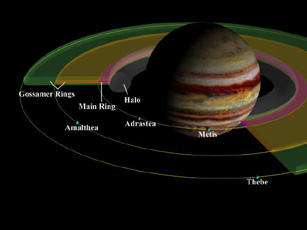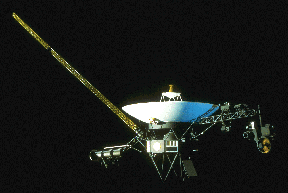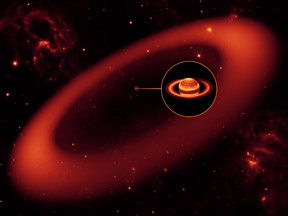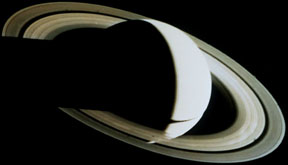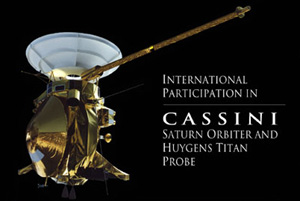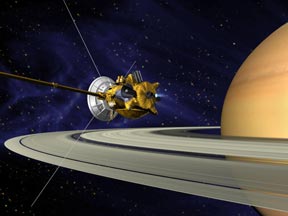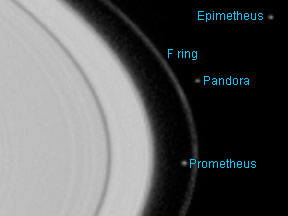Click on image for full size
Windows to the Universe original image
Ring Structure of Saturn
We have a lot to learn before we fully understand planetary rings. Saturn's rings are the brightest and therefore more famous than Jupiter's and Uranus' rings. The total number of rings is seven, and each one was given a letter between A and G for its name. Three of the rings, A, B and C, are visible from Earth with a telescope.
Saturn's rings were first discovered by Galileo in the 1600's, although at the time he didn't know what they were. In 1655, the astronomer Christian Huygens predicted that Galileo had seen rings. Later on, more powerful telescopes proved Huygens right.
In 1675, a scientist named Cassini found what appeared to be a gap between the A and B rings. This gap was later called the Cassini division. In the 1800's a third, faint ring was found and named C. It wasn't until 1979 that we found the E, F, and G rings, when the Pioneer 11 and Voyager spacecrafts flew by Saturn. They also found a smaller gap between the A and F rings, called the Encke division.
Two of Saturn's moons, Prometheus and Pandora, are called shepherd satellites. They are both tiny moons located on either side of the F ring. They work against each other, pushing the particles inside the F ring towards the middle of the ring. The result is a small, compact F ring.
An gigantic new "ring" was discovered in 2009. The Phoebe Ring is about 100 times bigger than the main ring system. Scientists think the ice and dust in the ring comes from the strange moon Phoebe. Particles from this ring might cause the strange coloration of the surface of Iapetus.


